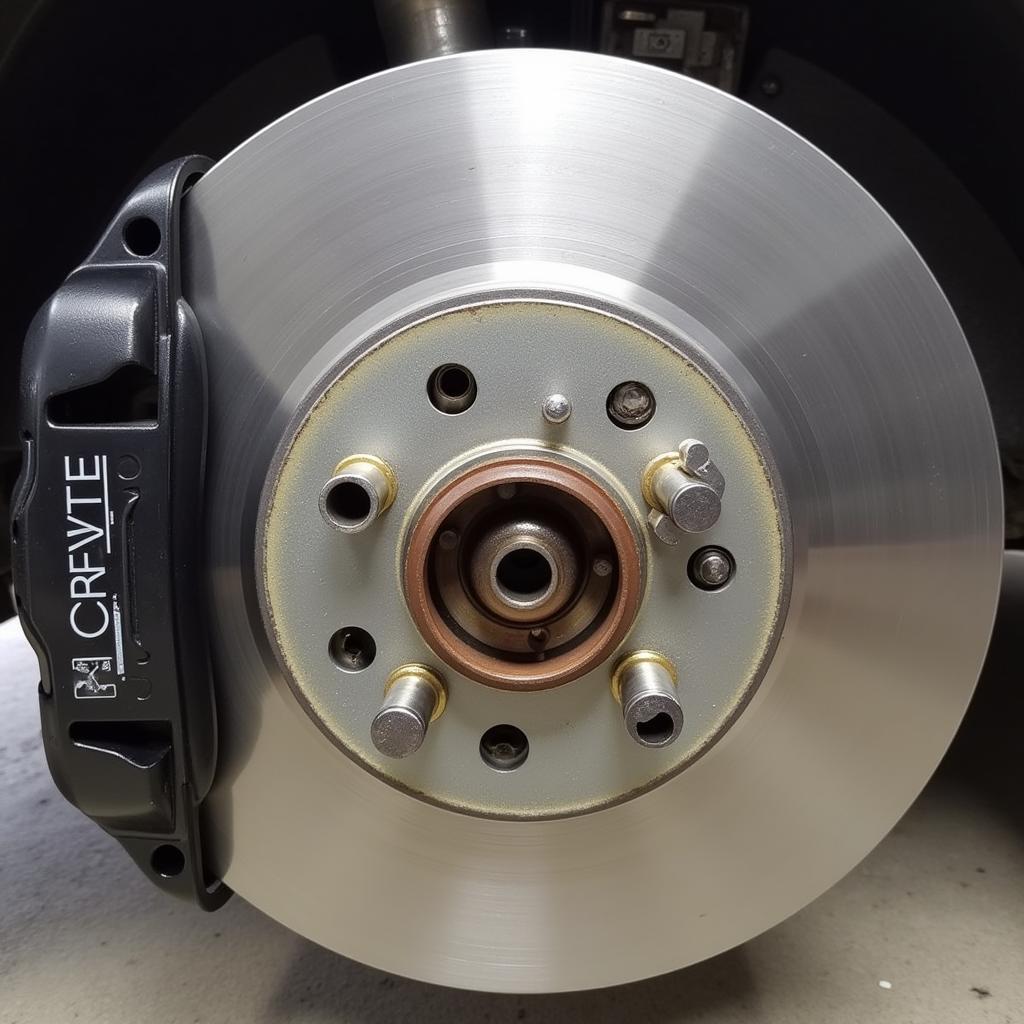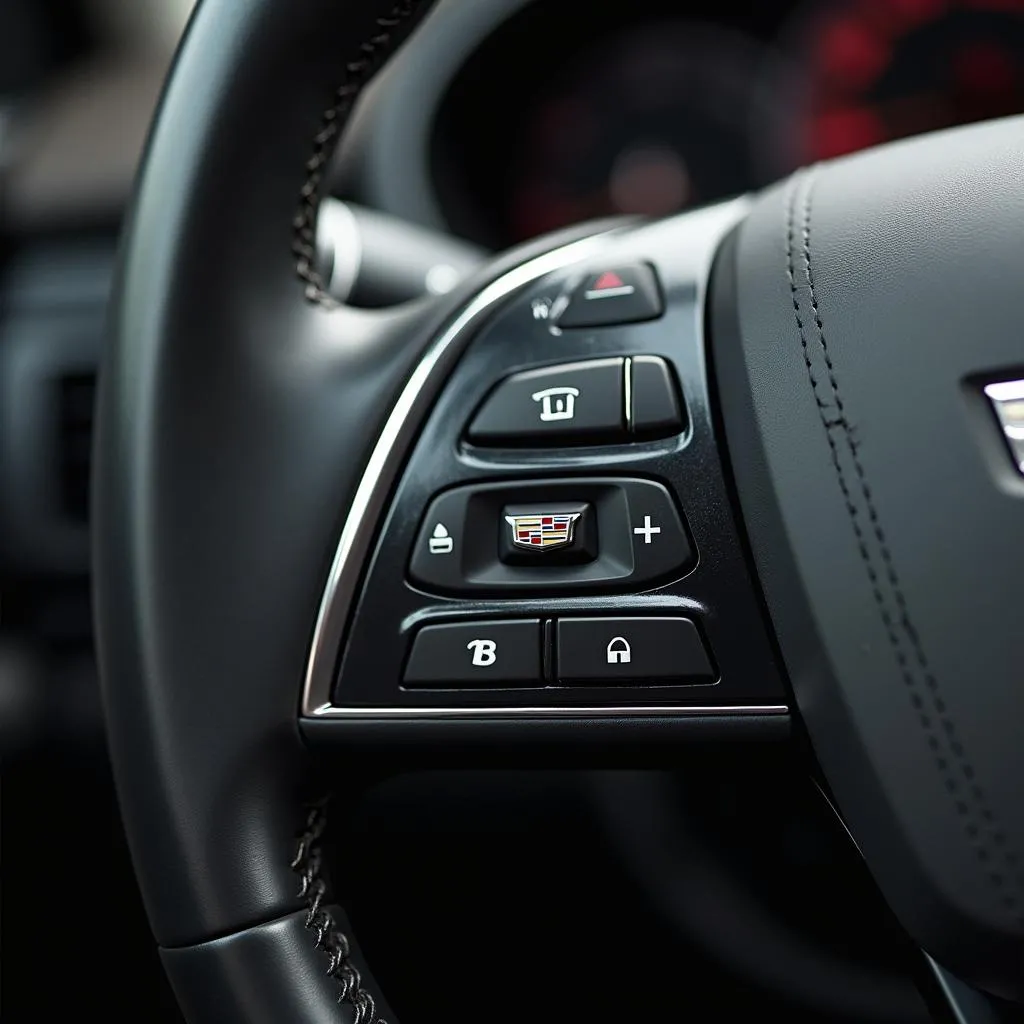The dreaded brake wear warning light illuminates your Mercedes dashboard. Don’t panic! This guide covers everything you need to know about “brake wear warning mercedes,” from diagnosing the issue to potential solutions and preventative measures. We’ll delve into the intricacies of this warning, empowering you to address it effectively.
Understanding the brake wear warning in your Mercedes is crucial for maintaining safety and optimal vehicle performance. This warning, often indicated by a yellow or red light on your dashboard, signifies potential issues with your braking system that require attention. Ignoring this warning can lead to more serious and costly repairs down the line. Let’s explore the various aspects of this warning light and learn how to address it. See our detailed guide on the Mercedes-Benz brake pad wear warning light for more information.
Decoding Your Mercedes Brake Wear Warning
The brake wear warning light in a Mercedes typically signifies that your brake pads are nearing the end of their lifespan. This is a normal part of vehicle maintenance and doesn’t necessarily indicate an immediate emergency. However, it does require prompt attention to prevent further damage and ensure your safety.
Common Causes of the Brake Wear Warning Light
- Worn Brake Pads: The most common culprit is worn brake pads, which have reached their minimum thickness.
- Faulty Brake Pad Wear Sensor: Sometimes, a malfunctioning sensor can trigger the warning light even if your brake pads are still in good condition.
- Low Brake Fluid: Low brake fluid can also trigger the warning, indicating a potential leak in the braking system.
- Brake System Malfunction: In rare cases, the warning light can point towards a more serious issue within the braking system itself.
 Mercedes Brake Pad Wear Sensor
Mercedes Brake Pad Wear Sensor
Troubleshooting the Brake Wear Warning
When the brake wear warning light appears, the first step is to check your brake pads. Visually inspect them for wear and tear. If they appear thin, it’s time for a replacement.
Checking Your Brake Pads
- Safety First: Park your car on a level surface and engage the parking brake.
- Inspect the Pads: Look through the spaces between the wheel spokes to assess the thickness of the brake pads. If they appear significantly thinner than a new set, they likely need replacing.
If you’re unsure about the condition of your brake pads, it’s always best to consult a qualified mechanic. They can accurately assess the remaining pad life and recommend the necessary course of action. Check out our resources on Mercedes E Class brake wear warning for more specific information.
Beyond the Pads: Other Potential Issues
If your brake pads appear to be in good condition, the problem could lie elsewhere. A faulty brake pad wear sensor, low brake fluid, or a more complex brake system malfunction might be the cause. Diagnosing these issues requires specialized tools and expertise. You may want to check our guide on Mercedes brake lining wear warning for related information.
Preventing Future Brake Wear Issues
Regular brake inspections are essential for preventing premature wear and tear. This includes checking your brake fluid levels, inspecting the brake pads for wear, and having your braking system professionally inspected at regular intervals. Simple maintenance can significantly extend the life of your brakes and prevent costly repairs.
“Regular brake maintenance is not just about saving money,” says automotive expert, Dr. Hans Mueller, “it’s about prioritizing safety on the road. A well-maintained braking system is your best defense in emergency situations.”
Conclusion
Addressing a brake wear warning in your Mercedes is crucial for ensuring your safety and preventing further damage to your vehicle. While worn brake pads are the most common cause, other potential issues require professional diagnosis. By understanding the causes of this warning light and taking proactive steps, you can keep your Mercedes braking system in optimal condition. For those with a B-Class, see our article on Mercedes B class brake wear warning. Don’t ignore the warning—address it promptly and drive with confidence.
FAQ
- What does the brake wear warning light look like? It’s typically a yellow or red symbol on your dashboard, often resembling a circle with parentheses around it.
- Can I drive with the brake wear warning light on? While you can drive for a short period, it’s crucial to address the issue promptly to avoid further damage and safety risks.
- How much does it cost to replace brake pads on a Mercedes? The cost varies depending on the model and the specific brake pads used. Consult a mechanic for an accurate estimate.
- How often should I check my brake pads? It’s recommended to visually inspect your brake pads every few months and have them professionally checked during regular maintenance services. For additional insights, explore the information on the brake wear warning light Mercedes.
- What happens if I ignore the brake wear warning light? Ignoring the warning can lead to severely worn brake pads, potentially damaging the rotors and other brake components, resulting in costly repairs.
- Can I replace my Mercedes brake pads myself? While possible, it’s recommended to have a qualified mechanic perform the replacement to ensure proper installation and functionality.
- What are the signs of worn brake pads besides the warning light? Other signs include squeaking or grinding noises when braking, reduced braking performance, and a vibrating brake pedal.

